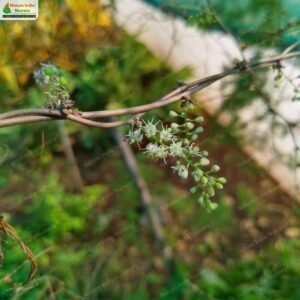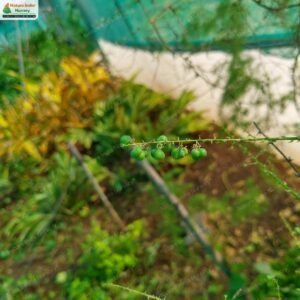Asparagus racemosus (Asparagus racemosus), commonly known as Shatavari, is a species of climbing perennial plant in the Asparagaceae family. It is native to India and is widely cultivated throughout Southeast Asia, Africa, and Australia. Shatavari is valued for its medicinal properties and has been used for centuries in traditional Ayurvedic medicine.
The plant typically grows up to 5-6 meters in height and produces needle-like leaves that are actually modified stems known as cladodes. These cladodes are green and flattened and can reach up to 2 cm in length. The small, fragrant white flowers grow in clusters along the stem and develop into red berries when mature.
Shatavari is known for its rejuvenating and nourishing qualities, particularly for the female reproductive system. It is believed to support female hormonal balance, enhance fertility, and promote lactation. In Ayurveda, it is also used as a general tonic to promote vitality and overall health.
Habitat: Asparagus racemosus thrives in tropical and subtropical climates with well-drained soil. It prefers partial shade and moderate moisture levels.
- Light: Partial shade.
- Soil: Well-drained, fertile soil.
- Watering: Regular watering, especially during dry periods, to maintain soil moisture.
- Maintenance: Prune to control growth and remove dead or damaged parts. Shatavari is generally low-maintenance once established.
Additional Information: Shatavari is also valued for its adaptogenic properties, helping the body cope with stress and promoting overall well-being.
















